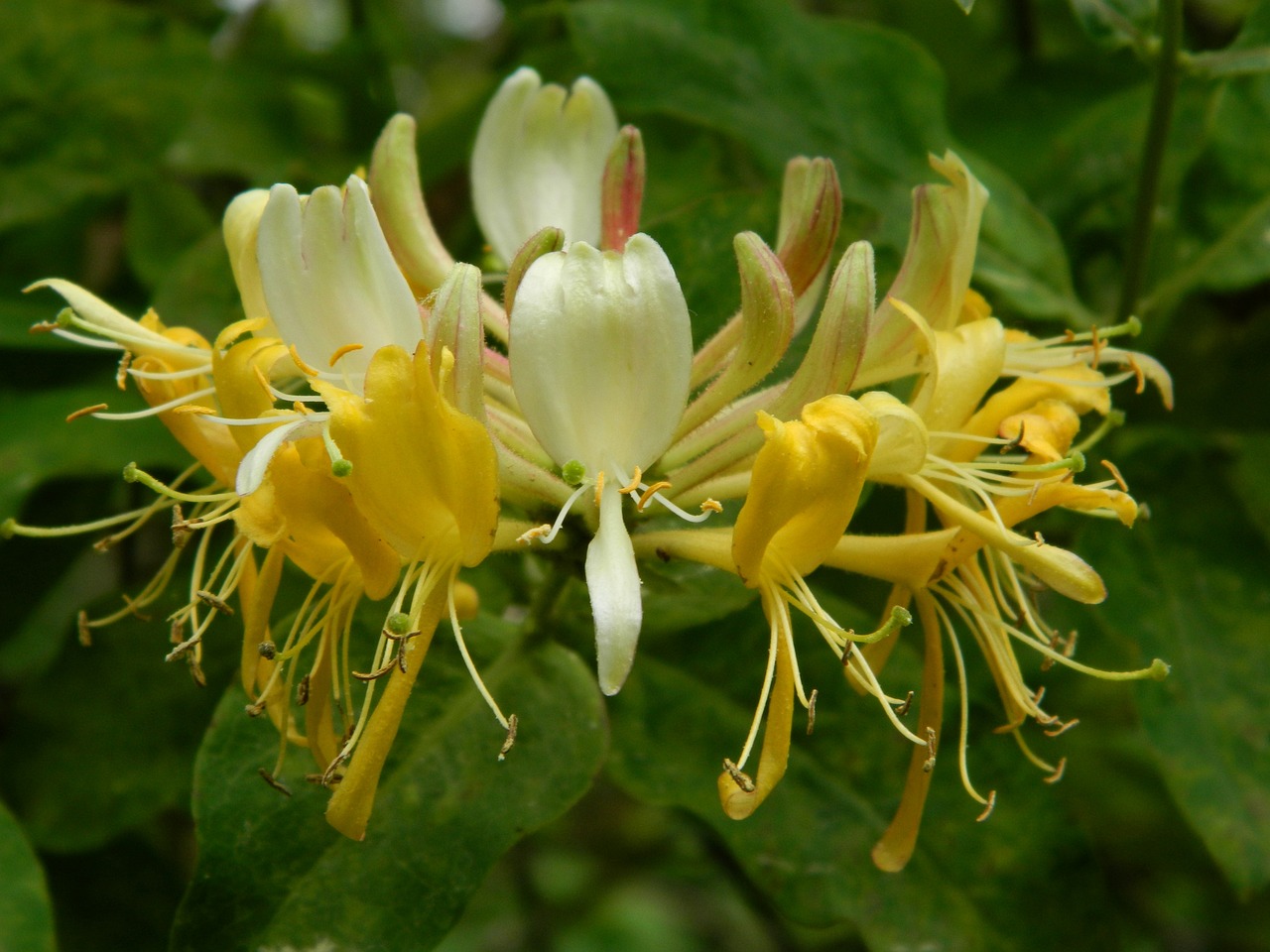Honeysuckle, with its sweet fragrance and vibrant blooms, has been captivating gardeners and nature enthusiasts for centuries. This climbing vine, known for its twining habit and colorful flowers, offers both visual appeal and aromatic delight. In this article, we will delve into the world of honeysuckle, exploring its characteristics, varieties, cultivation tips, and the joys it brings to gardens and landscapes.
Section 1: The Charm of Honeysuckle
- Fragrance and Nectar: Honeysuckle entices the senses with its intoxicating fragrance, attracting bees, butterflies, and hummingbirds in search of its abundant nectar. The sweet scent fills the air, creating a delightful atmosphere in gardens and outdoor spaces.
- Colorful Blooms: Honeysuckle flowers come in various hues, including shades of white, yellow, orange, and pink. Their trumpet-shaped blossoms add a touch of elegance and vibrancy to any landscape.
Section 2: Popular Honeysuckle Varieties
- Japanese Honeysuckle (Lonicera japonica): This vigorous vine features fragrant, creamy white flowers that age to yellow. It is known for its rapid growth and ability to cover fences, trellises, and walls.
- Trumpet Honeysuckle (Lonicera sempervirens): Native to North America, this honeysuckle variety showcases vibrant red, orange, or yellow trumpet-shaped flowers. It attracts hummingbirds and is prized for its showy blooms and wildlife appeal.
- Goldflame Honeysuckle (Lonicera x heckrottii ‘Goldflame’): This hybrid honeysuckle displays clusters of fragrant pink and yellow flowers. It offers a long blooming period and adds a splash of color to garden borders or containers.
Section 3: Cultivation and Care Tips
- Sun and Soil Requirements: Most honeysuckle varieties thrive in full sun or partial shade, with well-draining soil. Adequate sunlight is necessary for optimal flower production and fragrance.
- Support Structures: Honeysuckle vines require sturdy support structures, such as trellises, arbors, or fences, to climb and twine around. Ensure the structure is secure and can accommodate the vine’s growth.
- Pruning and Maintenance: Regular pruning helps maintain the shape, control growth, and encourage blooming. Remove dead or damaged branches and prune after flowering to promote new growth for the following season.
Section 4: Additional Uses and Benefits
- Wildlife Attraction: Honeysuckle’s nectar-rich flowers attract pollinators, including bees, butterflies, and hummingbirds, making it a valuable addition to wildlife-friendly gardens.
- Medicinal and Culinary Uses: Certain honeysuckle species have been used in traditional medicine for their potential health benefits. The edible flowers can be used in teas, syrups, or as a flavoring agent in culinary creations.
Conclusion: Honeysuckle, with its alluring fragrance and captivating blooms, brings a touch of enchantment to gardens and outdoor spaces. From the hummingbirds it attracts to the delightful scent that perfumes the air, this climbing vine adds a sense of beauty and vibrancy to any landscape. By understanding its characteristics and providing proper care, you can cultivate a thriving honeysuckle display that will reward you with its visual appeal and aromatic embrace.
